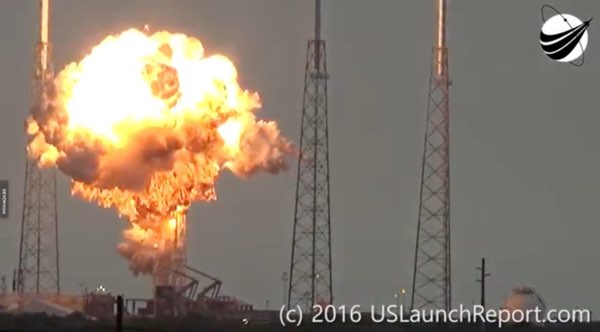Launch failures: non-launch mishapsby Wayne Eleazer
|
| When researching non-launch mishaps in order to assess their probability of occurrence for the Kennedy Space Center and the 45th Space Wing, analysts had to go rather far a field from merely space launches. |
On May 22, 1958, a Nike Ajax missile at an operational site in New Jersey detonated during maintenance activity. The missile warhead safe and arm devices were being replaced and, when the new devices failed to fit snugly enough, a local fix was devised which involved wrapping the threads with wire, which caused the warhead to detonate. The explosion killed ten people and seriously injured three others.
On September 19, 1980, a Titan II ICBM exploded in its silo near Damascus, Arkansas. The mishap occurred during a maintenance operation that involved pressurizing the upper stage propellant tanks. A dropped socket wrench knocked a hole though the propellant tank, leading to the explosion of the missile over eight hours later. An Air Force technician was killed and 21 others injured.
On July 3, 2003, an experimental upper stage, the Upper Stage Flight Experiment, was destroyed while undergoing a proof pressure test at CCAFS, injuring a technician. The explosion did not involve propellants but was due to rupture of one of the pressure bottles on the stage.
On August 22, 2003, the third Brazilian VLS launch vehicle exploded during processing, killing 21 members of the launch crew. The VLS had suffered from problems with attaining successful ignition of its solid motors during the first two flights. Testing of the motor igniters was underway when the explosion occurred.
On July 26, 2007, an explosion occurred at the Scaled Composites facility at Mojave Air and Space Port in California during an oxidizer flow test for a rocket engine injector. Loss of life and injuries occurred as a result of the explosion. This mishap was investigated by Occupational Safety and Health Administration (OSHA). According to the OSHA report, it does not appear that any official cause was identified, although the propellant in use was known to be capable of spontaneous reaction in the event that it came in contact with flammable substances, such as oils.
Two catastrophic failures occurred during preparation for ground test firings of Saturn S-IV stages in 1964 and 1967. The 1964 failure was due to over pressurization of the liquid oxygen tank. The 1967 failure was due to failure of a helium pressurization tank, which caused rupture of the liquid oxygen and liquid hydrogen lines and intermixing of the propellants.
The results of the study indicated that propellant loading and pressurization operations were the most hazardous likely to be dealt with during non-launch operations, with an estimated probability in the range of 0.24 and 1.7 percent.
| If a non-launch mishap was going to occur, a propellant loading operation would be one of the more likely scenarios. |
Solid motor production operations have proved to be quite hazardous on occasion, with some horrific mishaps ensuing due to accidental ignition, but such operations do not occur during launch processing at the launch bases. Interestingly enough, there were two cases of accidental activation of solid rocket motors in 1965, one at CCAFS and one at a Minuteman I operational silo, but none since; the corrective actions taken since that time clearly were effective for those types of failure.
So, if a non-launch mishap was going to occur, a propellant loading operation would be one of the more likely scenarios.
Possible causes
At this point, only speculation is possible, but it is interesting to note that similar failures have not occurred at a US launch base in quite some time.
Over pressurization of the second stage liquid oxygen tank is a possibility, although it would appear to be unlikely, since the tank seems to have been still in the process of being filled with liquid oxygen.
Liquid oxygen contact with an incompatible substance probably is a more likely possibility. Even given the previous tests and flights of SpaceX Falcon 9 vehicles, there is a history of such material incompatibilities being discovered the hard way, or at least rather later than would be expected.
An explosion occurred in a Bell X-1 vehicle in 1951 due to the incompatible nature of the seal used in the engine. This followed years of flights of Bell X-1 research aircraft during which the problem did not occur.
| One of the more significant findings of the Non-Launch Mishaps Study was that while previously unexperienced mishaps have been known to occur, they only tend to occur once. |
In the early 1980s, the Air Force discovered that the solder that had been utilized for decades inside Atlas and Thor vehicle liquid oxygen tanks was not compatible with liquid oxygen. The solder could explode when in a liquid oxygen environment and subjected to any number of different types of activation, including either physical or electrical.
One of the more significant findings of the Non-Launch Mishaps Study was that while previously unexperienced mishaps have been known to occur, they only tend to occur once. The expected probability of occurrence based on this observation is 0.079 percent. We have a history of failures, but also a history of successful corrective action. The most significant aspect of the latest SpaceX failure is that it may represent a second-time occurrence for a type of non-launch mishap in terms of the complete history of US space launches.
